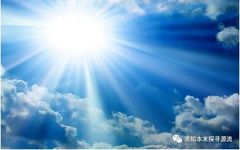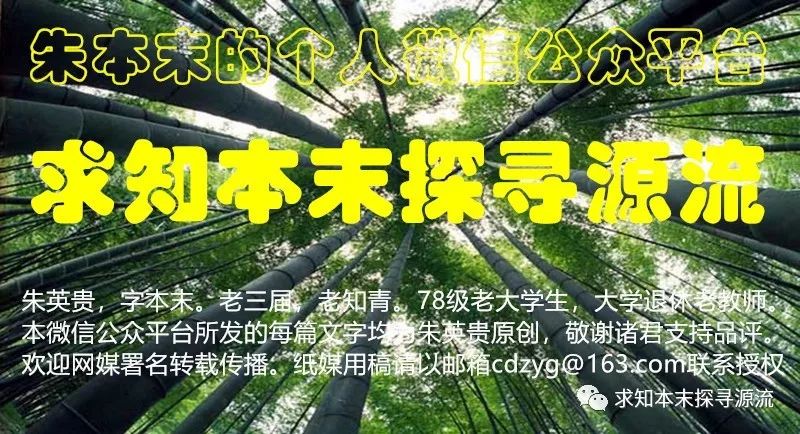
This article is approximately6800 words long, and it takes about14 minutes to read
Exploring Chinese Characters
(024)
Harmonizing Yin and Yang – Explanation of “Yang”(陽、昜)
Zhu Yinggui
The idiom “harmonizing Yin and Yang” means to bring order to Yin and Yang. What do we mean by “Yin and Yang”? From the original meaning of the characters, the place where sunlight does not reach is “Yin”, and the place where sunlight reaches is “Yang”. This article attempts to explain the traditional character “陽” and its original form “昜”, along with the rationale behind their construction and the evolution of their meanings.
1. The character “Yang” (陽、昜) – Interpretation of the character shape and original meaning

The evolution of the character “Yang” (陽、昜) and its etymology
In the ancient character shapes shown in the image above, the first two oracle bone characters represent “昜”, composed of “日” (sun) and “丅” (a shape representing the sun rising above clouds), with the original meaning being the rising sun. Below are several interpretations of the character “昜”:
Xu Shen’s “Shuowen Jiezi”, Volume 9, Wu Section: “昜, means to open. It consists of ‘日’, ‘—’, and ‘勿’. One interpretation is to fly high, another is to grow, and yet another is to represent the strong multitude.”
The general meaning of Xu Shen’s explanation is: “昜” means the clouds parting to reveal the sun. Its character is composed of three components: “日”, “—”, and “勿”. There are also several other interpretations, one indicating the meaning of flying high, another indicating growth, and yet another indicating the multitude of the strong.
Duan Yucai’s commentary on “Shuowen Jiezi” adds: “This is the correct character for Yin and Yang. When Yin and Yang operate, ‘昜’ is discarded. Opening a door is called ‘Qian’. Hence, it is said to mean ‘to open’.”
Zhu Junsheng’s commentary on “Shuowen Tongxun” states: “昜, which is the ancient character for ‘Yang’, is a character for Yin and Yang. ‘昜’ means the clouds parting to reveal the sun. ‘日’ represents the sun, and ‘—’ represents the clouds.”
From the explanations above, it can be seen that “昜” is an early constructed character, which later added “日” as a phonetic component, leading to the character “暘”. Later, the phonetic component “日” was replaced with “阜” (阝 on the left), resulting in the character “陽”. Thus, “昜” is equivalent to “陽” (simplified as “阳”), which is the “Yang” in “Yin and Yang”. The character “阜” (阝 on the left) was added later, meaning that “陰” (Yin) was originally written as “侌”, and “陽” (Yang) was originally written as “昜”. “侌” means to see clouds but not the sun, while “昜” means clouds parting to reveal the sun. Therefore, Xu Shen and Duan Yucai both interpret it as “to open”.
In the ancient character shapes shown in the image above, the latter oracle bone character represents “陽”. The oracle bone character for “陽” does not include the character “暘”. In the oracle bone character for “陽”, the original form “昜” serves as both a phonetic and semantic component, making “陽” a character that is also a phonetic character. The component “阜” (阝 on the left) indicates mountainous terrain (hills or slopes), while “昜” indicates sunlight, together representing a sunlit slope, specifically the southern slope of a mountain receiving sunlight.
The bronze inscriptions of the character “陽” have two forms; the first form inherits the oracle bone character without change, while the second form adds a representation of the sun’s light and shadow to the character “昜” (indicating sunlight), making the meaning more vivid.
The small seal character for “陽” continues the bronze inscription form, with a more standardized and neat shape. The clerical script and modern Chinese characters have changed the small seal’s “阜” to a left ear component (阝 on the left), and the simplified character has replaced the traditional character’s “易” with “日”, resulting in the simplified character “阳” used today in mainland China.
“Shuowen Jiezi”, Volume 14, 𨸏 Section: “陽, means high and bright. It consists of 𨸏 and the sound of 昜.”
The general meaning of Xu Shen’s explanation is: “陽” means the bright sunlight, and it is a phonetic character, using “𨸏” (阜) as a semantic component and “昜” as a phonetic component.
In summary, the original meaning of the character “Yang” (陽) is sunlight or brightness. For example: “The sun shines brightly, illuminating the world.” (from “Chuci•Yuan You”). Wang Yi’s annotation: “The sun shines brightly at dawn.” Hong Xingzu’s supplementary note: “The poem states: the sun rises brightly.” Another example: “The dew is clear and bright; without sunlight, it will not evaporate.” (from “Shijing•Xiao Ya•Zhan Lu”). Mao’s commentary: “Yang means the sun.” These two lines of poetry mean: the sparkling and abundant dew will not evaporate without sunlight. Another example: “The slanting sun shines on the grass and trees, in the ordinary alleys, people say the guest has once lived here.” (from Xin Qiji’s “Yong Yu Le•Jing Kou Bei Gu Ting Huai Gu”). Here, “slanting sun” has both the meaning of the sun setting in the west and the sunlight itself.
The original meaning of the character “Yang” is thus sunlight or brightness, which can lead to the following direct and indirect meanings:
Firstly, it indicates the sunlit side. For example: “The sunlit side of Min Mountain extends to Heng Mountain.” (from “Shu•Yu Gong”). Another example: “In any path of cutting the wheel, one must measure its Yin and Yang. The Yang is firm and strong, while the Yin is loose and soft.” (from “Zhou Li•Kao Gong Ji•Lun Ren”). Jia Gongyan’s commentary: “The sunlit side is the one facing the sun, while the shaded side is the one facing away from the sun.”
This leads to several meanings:
One indicates the southern slope of a mountain or the northern bank of a river. Since our country is located in the northern hemisphere, only the southern slope can receive sunlight, thus the southern side of the mountain is “Yang”, and the northern bank of the river can also receive sunlight, hence the northern bank of the water is “Yang”. This is the principle of “the southern mountain and northern water being Yang”. For example: “The southern side of the mountain is Yang, and the northern side of the water is Yang.” (from “Guliang Zhuan•Xigong 28”). This refers to the northern bank of the Yellow River, which is the Yang bank. Another example: “Five miles east of the courtyard is the so-called Huashan Cave, named for being on the southern side of Huashan.” (from Wang Anshi’s “Traveling to Baochan Mountain Record”). This refers to the southern side of Huashan. Another example: “On the southern side of Taihang Mountain, there is a Pan Valley. Between Pan Valley, the springs are sweet, and the soil is fertile, with abundant vegetation.” (from Tang’s Han Yu’s “Sending Li Yuan Back to Pan Valley Preface”).
Secondly, it indicates the front or surface of an object. For example: “In the case of external and internal cuts, the front is Yang, and the back is Yin.” (from “Yili•Sangfu”). Tang’s Jia Gongyan’s commentary: “The front of the garment is Yang, and the back is Yin, hence the front is three and the back is four, representing Yin and Yang.” Another example: “In Chang’an, there is an ancient藏经龛, built by Emperor Ming of Tang, with doors open in all directions, and all eight boards are painted by Wu Daozi, with Yang representing the Bodhisattva and Yin representing the Heavenly King.” (from Song’s Su Shi’s “Four Bodhisattva Pavilion Record”). Another example: “In ancient times, the side with characters on coins was Yin, while the side without characters was Yang.” (from Qing’s Gu Yanwu’s “Rizhi Lu•Qian Mian”).
Thirdly, it indicates the outer surface. For example: “Yin blood surrounds the body” (from “Zuo Zhuan•Xigong 15”). Tang’s Kong Yingda’s commentary: “The outside is Yang, and the inside is Yin.” Another example: “The outside is Yang, and the inside is Yin.” (from “Suwen•Yin Yang Li He Lun”).
Secondly, it indicates brightness and clarity. For example: “One Yin and one Yang, no one knows what I am doing.” (from “Chuci•Jiu Ge•Da Si Ming”). Wang Yi’s annotation: “Yin is dark, and Yang is bright.” Another example: “The hemp harvested in season must be long and sparse, with a bright color.” (from “Lüshi Chunqiu•Shen Shi”). Chen Qiyou’s commentary cites Xia Weizheng: “‘Color Yang’ means bright and beautiful colors.” Another example: “At this time, the goddess of Luo was deeply moved, leaning and wandering. The divine light alternated, sometimes Yin and sometimes Yang.” (from Cao Zhi’s “Luo Shen Fu”). The meaning here is: at this time, the goddess of Luo was deeply moved, wandering back and forth, and the divine light alternated between bright and dark. Here, “Yang” has the meaning of brightness.
This leads to several meanings:
One indicates gentleness and warmth. For example: “In spring, the sun shines, and the cuckoo sings.” (from “Shijing•Bin Feng•Qiyue”). Mao’s commentary: “Yang means warmth.” Another example: “If it is stored well and used widely, there will be no excess warmth in winter and no hidden cold in summer.” (from “Zuo Zhuan•Zhao Gong 4”). Du Yu’s commentary: “Excess means too much. It refers to warmth in winter.” Another example: “In winter, one should wear thick cloth, and coarse linen to respond to the Yang.” (from Jin’s Tao Qian’s “Miscellaneous Poems” No. 6). Wang Yao’s commentary: “Yang means warmth.” In ancient poetry, the “Yang Spring Song” and “Yang Spring Tune” both imply warmth.
Two indicates the spring and summer seasons. For example: “If one turns away from winter and enters spring, Yin fades and Yang emerges.” (from “Wen Xuan•Pan Yue’s ‘Xian Ju Fu'”), Li Shan’s commentary cites “Shennong Bencao”: “Spring and summer are Yang, while autumn and winter are Yin.” Another example: “At the time when Yang is first warming, I send off my departure from Linchuan.” (from Jin’s Pan Yue’s “Sheng Fu”).
Three indicates the opposite meaning of ‘Yin’. For example: “One Yin and one Yang is called the Dao.” (from “Yi•Xi Ci Shang”). Gao Heng’s commentary: “One Yin and one Yang, contradictory and opposing, transforming into each other, is called the law.” Another example: “The Yellow Emperor asked: ‘I have heard that heaven is Yang, earth is Yin, the sun is Yang, and the moon is Yin. The large and small moons, 360 days make a year, and humans should also follow this.'” (from “Suwen•Yin Yang Li He Lun”). Another example: “The relationships of monarch and minister, father and son, husband and wife, all follow the principles of Yin and Yang. The monarch is Yang, the minister is Yin; the father is Yang, the son is Yin; the husband is Yang, the wife is Yin.” (from Han’s Dong Zhongshu’s “Chunqiu Fanlu•Ji Yi”). This is the so-called “Yang” in “Yin and Yang”. Ancient Chinese philosophy believes that the two opposing aspects that permeate all matter in the universe are “Yin” and “Yang”. What is “Yin and Yang”? From the original meaning of the characters, the place where sunlight does not reach is “Yin”, and the place where sunlight reaches is “Yang”. This meaning of “Yang” should be related to the later meanings of “open and obvious”, because only the places illuminated by sunlight are “open, obvious, and exposed”. Generally, things that possess the attributes of “open, obvious, and exposed” are “Yang”, while the opposite is “Yin”. The study of “Yin and Yang” is a major subject in traditional Chinese culture, which has surpassed the scope of the character’s meaning, and this article will not delve into it.
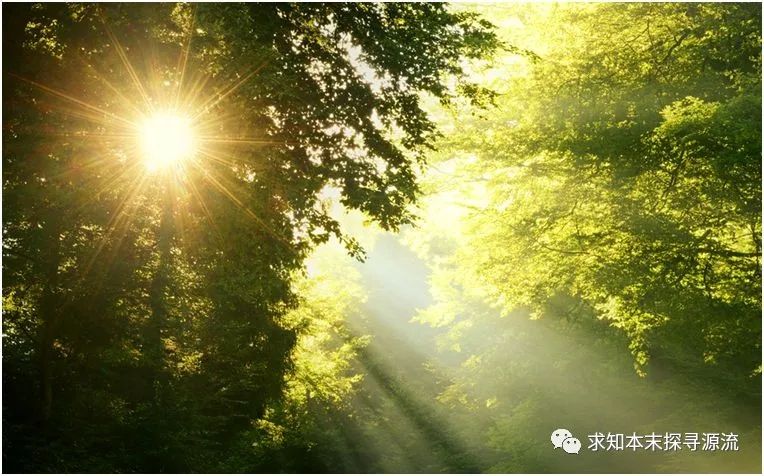
Secondly, it indicates openness and clarity. For example: “And Jizi was publicly mad.” (from “Da Dai Li Ji•Bao Fu”). Here, “Yang mad” means publicly mad. Another example: “Thus, the one who surpasses oneself cannot be heard, and if heard, it is obviously unknown.” (from Jin’s Ge Hong’s “Baopuzi”). The term “Yang unknown” means obviously unknown. The idiom “Yang Feng Yin Wei” uses this extended meaning of “Yang”.
This leads to several meanings:
One indicates exposure and revelation. For example: “Yang means to advance plans, while Ji means to respond to feelings.” (from “Guanzi•Chimi”). Dai Wangxiao’s correction: “Yang means to make things clear, wanting to advance and make plans.” Another example: “Zhongni said: ‘Do not enter and hide, do not exit and expose, and place the firewood in the center.'” (from “Zhuangzi•Dashing Life”). Cheng Xuanying’s commentary: “Yang means to reveal.”
Thus, it can also indicate pretense. For example: “What is said to be Yin is thick profit, while appearing to be famous, and if said to be famous, then Yang collects itself, while in reality, it is sparse.” (from “Han Feizi•Shuo Nan”). Another example: “In the first month of spring, Yang respected King Huai as the righteous emperor, but did not actually follow his orders.” (from “Han Shu•Gao Di Ji Shang”). Another example: “Thus, the one who surpasses oneself cannot be heard, and if heard, it is obviously unknown.” (from Jin’s Ge Hong’s “Baopuzi•Ji Miao”).
Two indicates masculine and male. For example: “Yang advocates Yin harmony, men act while women follow; men do not independently marry, and women do not independently marry, but must rely on parents and matchmakers.” (from Han’s Ban Gu’s “Bai Hu Tong•Marriage”). Another example: “When the man is older and the woman is younger, Yang expands while Yin contracts.” (from Han’s Ban Gu’s “Bai Hu Tong•Marriage”). Another example: “Yin birds fly with their heads tucked and feet extended; Yang birds fly with their heads extended and feet tucked.” (from Ming’s Ye Ziqi’s “Cao Mu Zi•Guan Wu”).
This can also indicate protruding. For example: “What is called the inscription refers to two meanings: the inscription refers to the Yin character, which is recessed; the identification refers to the Yang character, which is protruding.” (from Ming’s Tao Zongyi’s “Chuo Geng Lu•Ancient Bronze”). Another example: “The so-called Yin and Yang characters refer to their use without mentioning their form.” (from Ming’s Wen Peng’s “Yin Zhang Ji Shuo•Distinguishing Yin and Yang Characters”). The term “Yangwen” in seal carving refers to the protruding meaning, indicating the raised patterns or characters on a seal.
Three indicates the male reproductive organ. The character “Yang” can also extend from the meaning of “open and obvious” to indicate “exposed and protruding”, hence terms like “yang organ” and “impotence” refer to the male reproductive organ being exposed on the body surface (as opposed to the female reproductive organ being hidden). For example: “A boy born in Fujian, the Fujian official obtained him, and then cut off his Yang, for the sake of gain.” (from Tang’s Gu Kuang’s poem “Boy”). Another example: “In the county of Tang, a farmer in a village was born with a Yang length of three inches, and as he grew, the Yang grew to one foot. Now, over thirty years old, no one would marry him.” (from Qing’s Dong Xuan’s “Shu Yi Ji•Giant Man”).
This can also indicate vital energy and semen. For example: “Women have seven sevens, forty-nine Yin ends, while men have eight eights, sixty-four Yang ends; beyond this, it is marriage or wild union. At that time, Uncle Liang He married a young girl from the Yan family, hence it is called wild union.” (from Yuan’s Wang Yun’s “Yutang Jia Hua” Volume 6). Another example: “When I was with my concubine, the feelings were strong, suddenly I transmitted another intention to call Li, and Li’s heart was empty, thinking that the matter with my concubine was leaked, thus he died of Yang in my concubine’s belly.” (from Qing’s Yan Youxi’s “Shuhua Suibi•Li Taiqing”).
Thirdly, it indicates revival and growth. For example: “The heart that is close to death should not be allowed to revive.” (from “Zhuangzi•Qi Wu Lun”). Cheng Xuanying’s commentary: “Yang means to be born.” Another example: “Accumulating beauty and fragrance to connect with heaven.” (from Han’s Dong Zhongshu’s “Chunqiu Fanlu•Zhi Zhi”). Another example: “The sun and moon return to their cycles; I go and do not return to Yang.” (from Jin’s Tao Qian’s “Miscellaneous Poems” No. 3).
This leads to several meanings:
One indicates the human world. For example: “Behind the temple is the Ming De Hall, and behind the hall is the Zun Jing Pavilion, where the tall officials are, and the temple gate and the school gate, both trees receive the influence of gold, and the Yang house is the mouth of the air; if alive, it is a blessing, if cut, it is a disaster.” (from Ming’s Gu Qiyuan’s “Ke Zuo Zhu Yi•Confucianism”). In ancient times, geomancers referred to the residences of the living as “Yang houses”, in contrast to the tombs as Yin houses. Another example: “In the underworld, since my Yang life is not yet over, I will return to Yang.” (from Qing’s Dong Xuan’s “Shu Yi Ji•Farmer Attached to Corpse”). Another example: “Even thieves have their principles; I cannot do anything, you should return to the Yang world, and it is acceptable to part with your wife and children.” (from Qing’s Yuan Mei’s “New Qi Xie•Seven Thieves Seeking Life”).
Two indicates openness. For example: “Zhang Qian opened the door and stood at ten thousand households, following Yin and Yang to open and close.” (from “Book of the Later Han•Ban Gu’s Biography”). Li Xian’s commentary: “To close is Yin, to open is Yang.” Another example: “At the time of no heavy arrivals, flowers do not return to Yang.” (from Jin’s Lu Ji’s “Short Song”).
Three indicates drought. For example: “The white emperor controls the time, and the national teacher of the West controls the time of Yang, the white light is flat, and the measurement is weighed.” (from “Han Shu•Wang Mang’s Biography”). Yan Shigu’s commentary cites Ying Shao: “His punishment is often Yang. Yang means drought.” Another example: “The weather is dry and hot; the holy thoughts are anxious… from spring to summer, slightly causing excess Yang, as the sun is tied to the time, do not forget to pray for good.” (from Song’s Wang Yuzheng’s “For the Prime Minister’s Thanks for the Imperial Poem”).
Fourthly, it indicates heaven. For example: “Riding the dragon to ascend to Yang, carrying the elephant to ascend.” (from “Chuci•Wang Bao’s ‘Nine Huan•Tong Lu'”), Wang Yi’s annotation: “The intention is to ride the dragon and ascend to the clouds.”
This leads to several meanings:
One indicates clear weather. For example: “Looking up to the Emperor of Fortune, Yang shines while Yin hides.” (from “Wen Xuan•Zhang Heng’s ‘Xijing Fu'”), Xue Zong’s annotation: “The Taiwei Palace is visible in Yang times and hidden in Yin times.”
Two indicates noon. For example: “In the suburbs, the great offerings to heaven and the main sun are paired with the moon. The summer after the emperor offers his darkness, the Yin people offer their Yang, and the Zhou people offer the sun at dawn and dusk.” (from “Li Ji•Ji Yi”). Zheng Xuan’s annotation: “Yang is read as ‘Yue’ and ‘Yang’, referring to the time of noon.” Kong Yingda’s commentary: “According to ‘Hong Fan•Shu Zheng’, it is said that ‘Yue’ and ‘Yang’ refer to the dry and bright time of noon, different from dusk and dawn.”
Fifthly, it indicates the Yang energy. For example: “Heaven acts horizontally, Yang departs and dies.” (from “Chuci•Tian Wen”), Wang Yi’s annotation: “If a person loses Yang energy, he dies.” Another example: “If the heavenly movement loses its measure, Yin energy comes to interfere with Yang.” (from Tang’s Han Yu’s “Chong Yun Yi Shou Li Guan Zhi” poem). Another example: “The Yang born from the earth is unnoticed, and the burn marks are not cold yet green.” (from Song’s Yang Wanli’s “Xiao Chui Huang Zhuo Zhuang” poem No. 2).
This leads to several meanings:
One indicates fierceness. For example: “Inner Yin and outer Yang, inner soft and outer hard.” (from “Yi•Pi”). Gao Heng’s annotation: “Kun is the Yin hexagram, which is soft; Qian is the Yang hexagram, which is hard.” Another example: “Using Yang to fill the hole, the color is uncertain, which is what ordinary people do not violate.” (from “Zhuangzi•Ren Jian Shi”). Cheng Xuanying’s commentary: “Yang means fierceness.”
Two indicates greatness and strength. For example: “I have heard that the world is Yin Yan and Yang Wei, connecting Jing and solidifying Qi, collecting Han and forming from, and will challenge Qin in the southwest.” (from “Strategies of the Warring States•Qin Strategy 1”). Gao You’s annotation: “Yin is small; Yang is large.”
Based on the above analysis of the evolution of the character “Yang”, the development of the meaning of the character can be summarized as follows (the horizontal and vertical lines in the diagram indicate the chronological evolution of meanings):
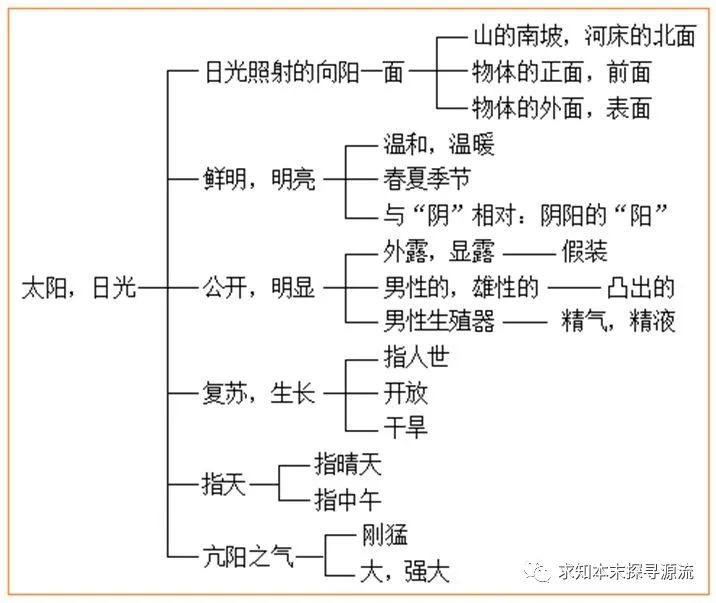
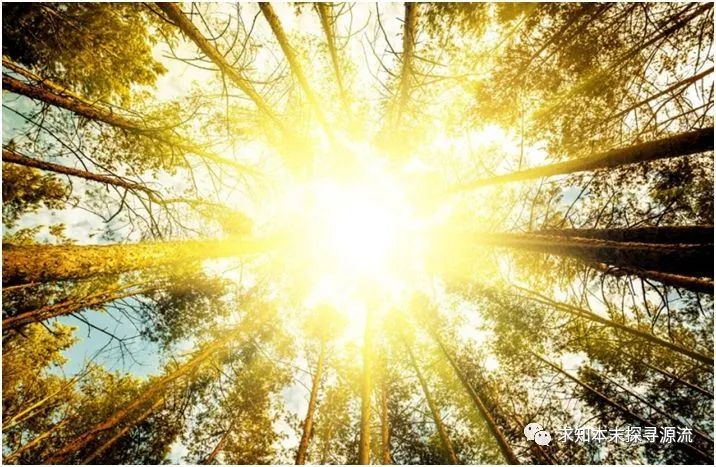
Thirdly, related idioms containing the cultural meaning of the character “Yang”
The character “Yang” in related idioms retains multiple meanings, including representing the sun, indicating the southern side of the mountain and northern side of the water, representing brightness and warmth, indicating openness and clarity, and representing the opposition of Yin and Yang.
Firstly, the character “Yang” in idioms represents the sun, for example:
Dan Feng Chao Yang – Metaphor for talented individuals encountering bright times. Originating from “Shijing•Daya•Juan A”: “The phoenix sings on the high hill. The parasol tree grows in the morning sun.”
Jiao Yang Si Huo – Jiao: bright and shining. The sun burns like fire. Often describes the heat of summer.
Kui Huo Qing Yang – Kui: sunflower. Huo: leaves of leguminous plants. Sunflowers and leguminous plant leaves lean towards the sun. Metaphor for a devoted heart towards admired individuals or loyalty from subordinates to superiors. Originating from Tang’s Du Fu’s “Traveling from the Capital to Fengxian County, Expressing My Feelings in Five Hundred Words”: “Sunflowers lean towards the sun, and the nature of things is hard to change.”
Ming Feng Chao Yang – Honest and outspoken virtuous individuals. Metaphor for virtuous ministers encountering wise rulers. Originating from “Shijing•Daya•Juan A”: “The phoenix sings on the high hill. The parasol tree grows in the morning sun.” Seen in “Youxue Qionglin•Volume One•Civil Officials”: “Li Shan is known for his frankness, often referred to as Ming Feng Chao Yang.”
Xi Yang Xi Xia – Refers to the scene of the sun setting in the evening. Also metaphorically refers to old age or the decline of things. Seen in Yuan’s Ma Zhiyuan’s “Tian Jing Sha•Autumn Thoughts”: “As the sun sets in the west, the heartbroken person is far away.”
Secondly, the character “Yang” in idioms indicates the southern side of the mountain and northern side of the water, for example:
Heng Yang Yan Duan – The southern peak of Heng Mountain has a returning geese peak, which is said to be the boundary for geese coming and going. Metaphor for lack of communication. Originating from Tang’s Gao Shi’s “Sending Li Shaofu to Banxia and Wang Shaofu to Changsha” poem: “In the Wu Gorge, the howling monkeys shed tears, how many letters from the returning geese of Heng Yang?”
Wei Yang Zhi Qing – Wei Yang: the northern side of the Wei River. It is said that Duke Kang of Qin sent his uncle Chong Er back to Jin, until the northern side of the Wei River. Refers to the friendship between uncle and nephew. Originating from “Shijing•Qin Feng•Wei Yang”: “I send my uncle, saying that I have arrived at Wei Yang.” Seen in “Book of the Later Han•Ma Yuan’s Biography”: “His order to Xu Hou to think about the fields and houses, the officials should not ask again, to comfort my Wei Yang feelings.”
Luoyang Zhi Zhi – Luoyang: a city on the northern bank of the Luo River. Originally referred to the paper of Luoyang during the Western Jin Dynasty, as everyone competed to copy Zuo Si’s works, leading to a temporary shortage and high prices. Later metaphorically refers to works being highly valued, widely circulated, and popular. Originating from “Book of Jin•Zuo Si’s Biography”: “Thus, the wealthy families competed to copy, leading to a paper shortage in Luoyang.”
Thirdly, the character “Yang” in idioms indicates brightness and warmth, for example:
Yang Chun You Jiao – Yang Chun: the bright and warm spring. Used to praise wise officials. Originating from the Five Dynasties’ Wang Ranyu’s “The Story of the Remnants of the Kaiyuan and Tianbao Era•The Spring with Feet”: “Song Li loves the people and cares for things, praised by the court and the public, people all say Li is like a spring with feet, as wherever he goes, it is like the warmth of spring.”
Yang Xu Shan Li – Warm like the sun, standing like a mountain. Metaphor for a gentle character and upright conduct. Seen in Song’s Hu Jizong’s “Shu Yan Gu Shi•Appearance and Character”: “Wang Jun is warm like the sun and stands like a mountain, a vessel for the ancestral temple.”
Zhou Yin Ye Yang – According to ancient Chinese Yin and Yang theory, daytime belongs to Yang, and nighttime belongs to Yin. “Zhou Yin Ye Yang” indicates abnormality in the heavenly way, which will lead to disasters. Seen in “Book of the Later Han•Wang Yun’s Biography”: “The moon violates the law, and comets appear, daytime is Yin and nighttime is Yang, mist and fog invade.”
Fourthly, the character “Yang” in idioms indicates openness and clarity, for example:
Qian Qie Yang Piao – Publicly or secretly stealing.
Yang Jie Yin Du – Refers to surface reconciliation while secretly plotting harm. Seen in Ming’s Li Zhi’s “Reply to the Letter”: “All of them are gentlemen on the road, and there is no hidden resentment among friends, the matter of Yang Jie Yin Du does not exist.”
Yang Feng Yin Wei – Yang: on the surface; Feng: to obey, to follow; Yin: secretly. Refers to playing both sides, appearing to comply while secretly opposing. Seen in Qing’s Li Baojia’s “The Reality of the Officialdom” Chapter 47: “I have advised him face to face, but I cannot know that the governor plays both sides, so I cannot do anything about it.”
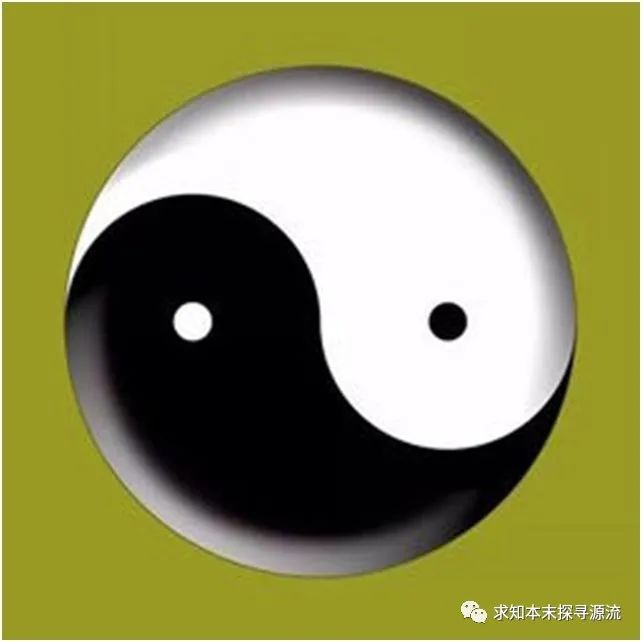
Fifthly, the character “Yang” in idioms indicates the opposition of Yin and Yang, for example:
Bu Yin Bu Yang – Metaphor for unclear attitudes, ambiguous. Seen in Qing’s Yan Gu Laoren’s “Continuation of the Sea of Suffering” Chapter 44: “Such ambiguity, how can I handle it?”
Dian Dao Yin Yang – Refers to reversing right and wrong, confusing black and white. Seen in Qing’s Li Ruzhen’s “Mirror Flower Fate” Chapter 2: “That person is the master of the four seas and nine provinces, declaring the will of heaven, how can he reverse Yin and Yang and force others?”
Xie Li Yin Yang – Xie: to harmonize; Li: to govern. Refers to ministers assisting the emperor in governing state affairs. Seen in “Shangshu•Zhou Guan”: “Establishing the Grand Master, the Grand Tutor, and the Grand Protector. These three officials discuss the Dao and govern the country, harmonizing Yin and Yang.”
Yin Cha Yang Cuo – Metaphor for mistakes caused by chance factors. Originating from Ming’s Wang Kui’s “Li Hai Ji•History”: “Yin Cha Yang Cuo, there are twelve months, divided into four segments of sixty Jiazi, each with fifteen Chen… Jiazi and Jiawu are Yang Chen, hence Yin Cha; Jiyin and Jiyou are Yin Chen, hence Yang Cuo.”
Diao He Yin Yang – Refers to making Yin and Yang orderly, leading to favorable weather. Previously referred to the prime minister handling state affairs. Seen in “Book of Han•Gong Yu’s Biography”: “Harmonizing Yin and Yang, nurturing all things, transforming the world, making it easier to decide the flow and suppress the team.”
Yin Yang Can Shu – In ancient times, autumn and winter were Yin, while spring and summer were Yang. Refers to the sorrow of autumn and winter, and the joy of spring and summer, indicating the changes of the four seasons. Originating from Han’s Zhang Heng’s “Xijing Fu”: “When the person is in Yang times, they are joyful, while in Yin times, they are sorrowful.” Seen in Southern Dynasties’ Liang’s Liu Xie’s “Wen Xin Diao Long•Wu Se”: “The spring and autumn alternate, Yin and Yang change, the movement of things, the heart also sways.”
Yin Yang Jiao Cuo – Refers to mixing up Yin and Yang. Later metaphorically refers to mistakes caused by chance factors. Seen in Ming’s Xu Zhonglin’s “Feng Shen Yan Yi” Chapter 35: “Hearing that the Grand Master made a mistake this time, it was a moment of miscalculation.”
Related Links:
Exploring Chinese Characters (021): Thousands of Rivers and Mountains – Explanation of “Mountain”
Exploring Chinese Characters (022): People’s Health and Abundance – Explanation of “阜”
Exploring Chinese Characters (023): Seeking Valleys and Crossing Hills – Explanation of “Hill”
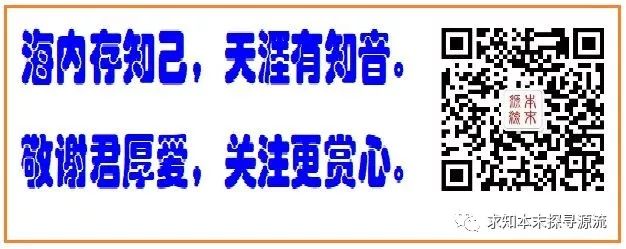
Press and hold the QR code on the right to follow

